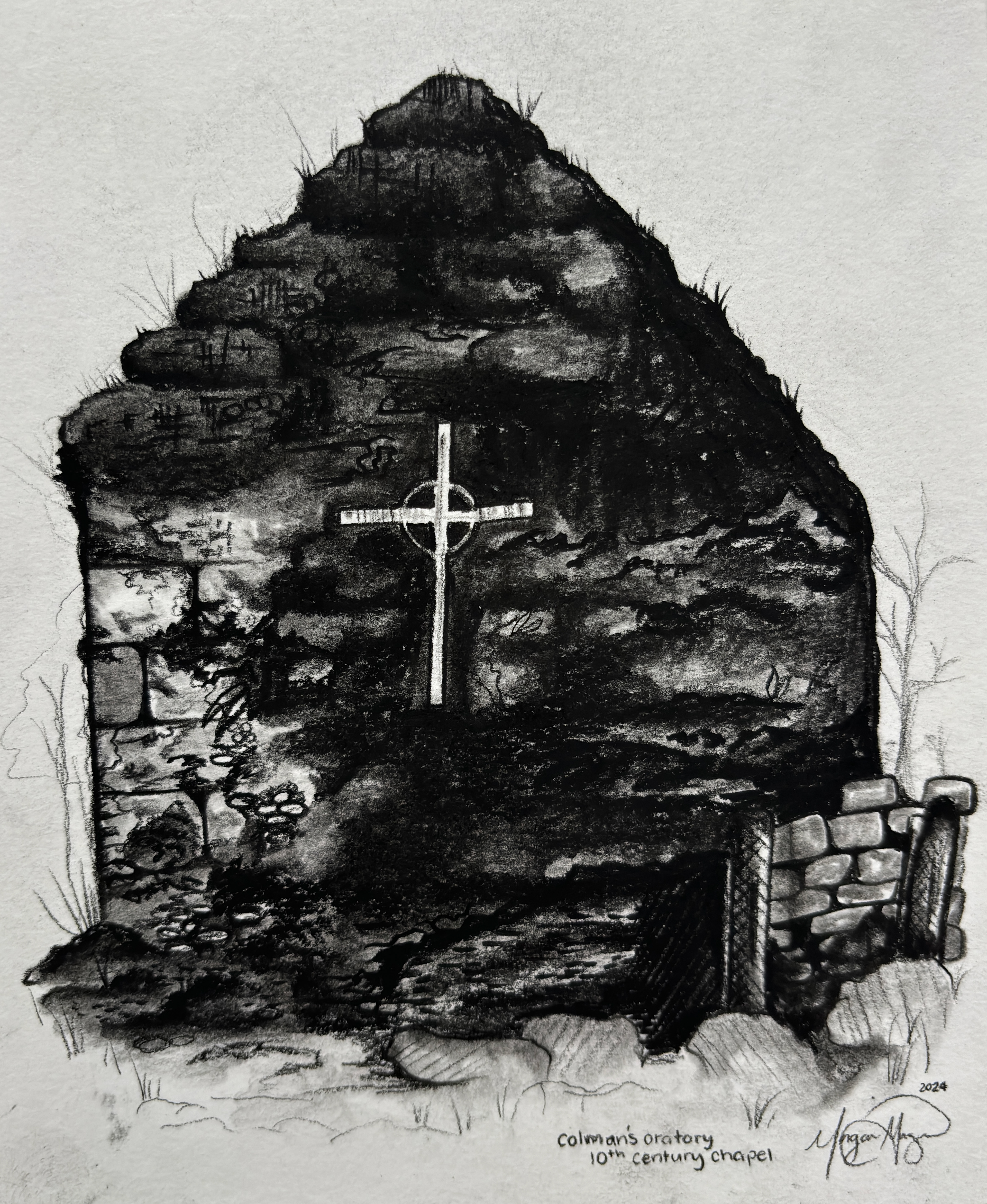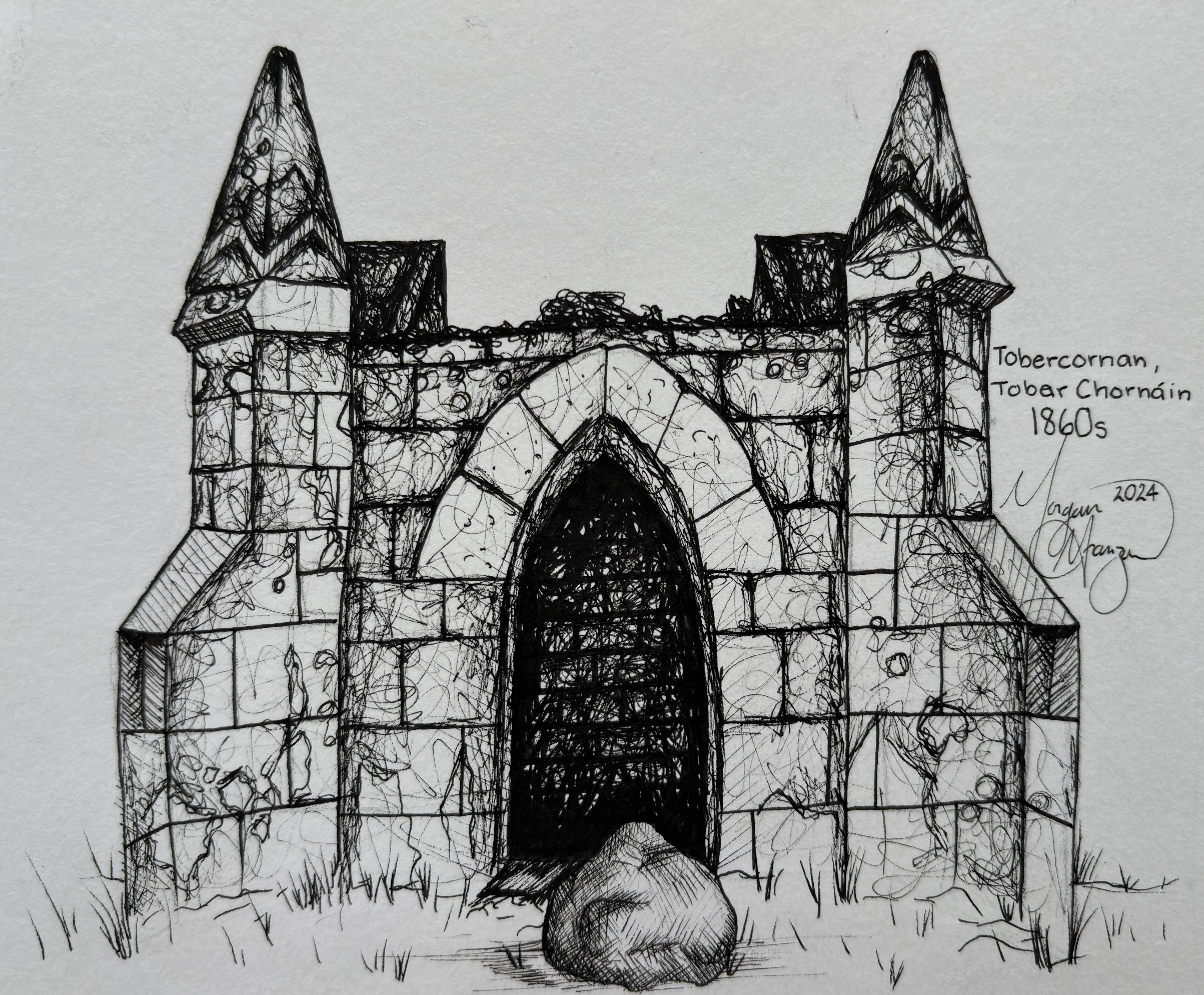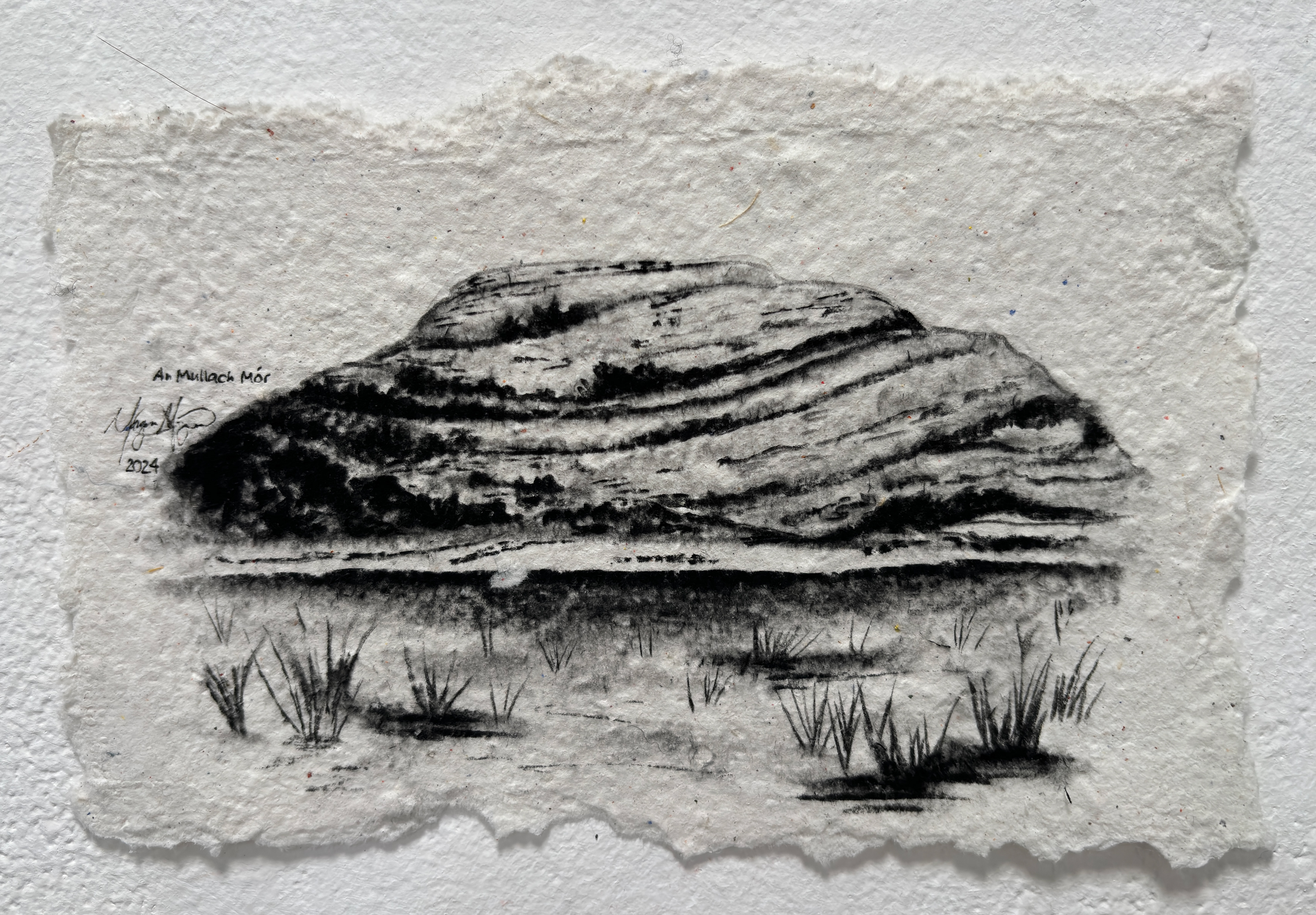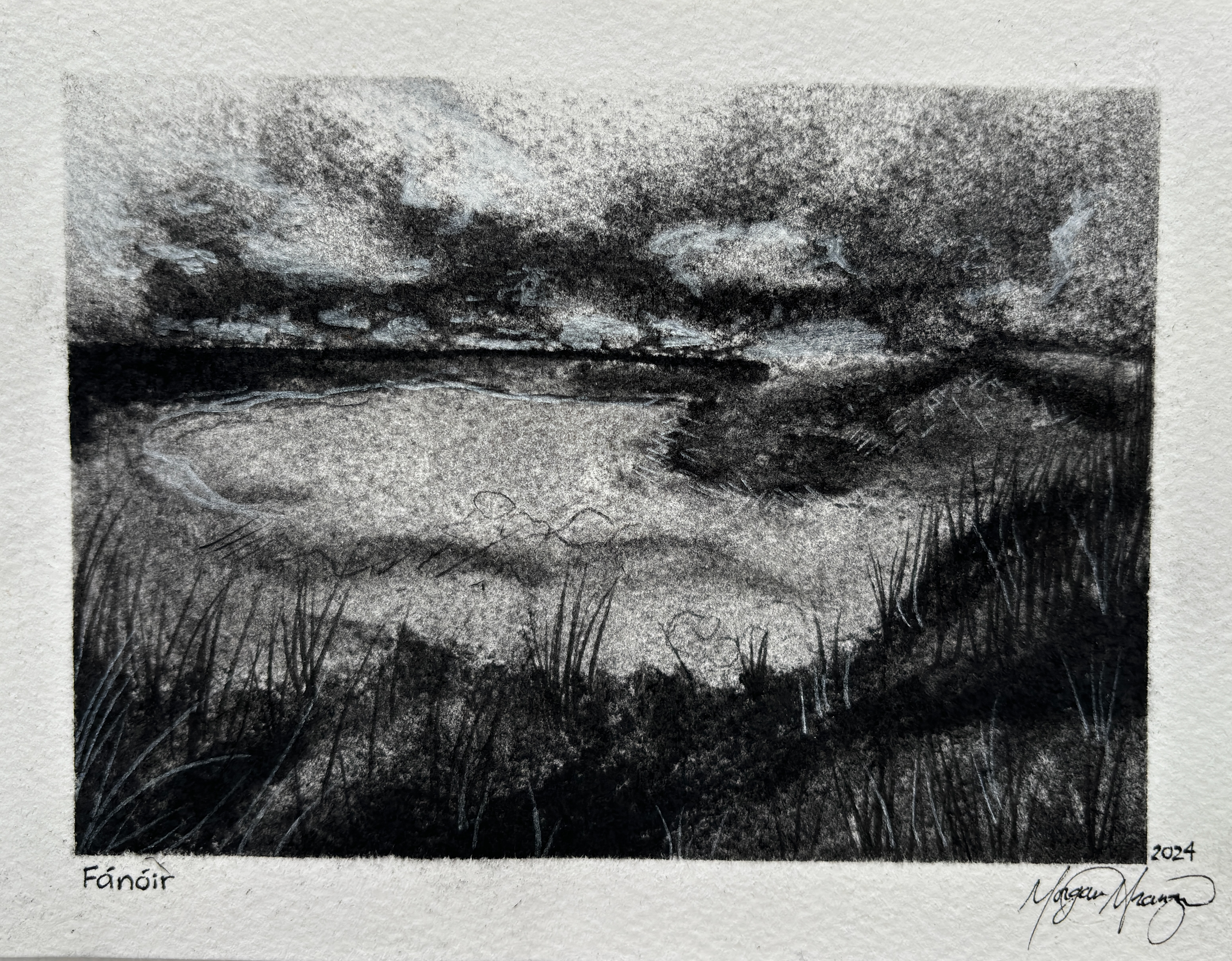To separate the Irish language from the land is to not understand that land at all. Over the course of my four weeks at the Burren College of Art, I not only examined the ecology, but also how language played a role in our perception of the land.
In Machán Magan’s 32 Words for Field, he stated, “the most direct and visceral way the Irish language is connected to the landscape is through place names”. Town names like Fanore and Kilfenora are prime examples of the deep roots of the language being in the land itself. Fanore, coming from the Irish name, Fánóir, roughly translates to the declalvity by the sea coast. Meanwhile, Kilfenora, Cill Fhionnúrach, meaning church of the fertile hillside. The names themselves were brought upon by the environmental factors that make the places what they are.
The intention of my work at the Burren was to recognize the importance of the language, in order to better appreciate the culture and environment I was immersed in for four weeks. Upon my wall, you will read the word díláthair, a word with no English equivalent. It essentially means the absence that we will feel as our environment becomes depopulated and destroyed by human activity. The fact that the Irish language has so many specific words for not only the parts of the environment, but also the feelings we have towards it, shows how much more Irish ancestors’ culture revolved around the world around them centuries ago.
Further words that derived from my research were the Burren itself, An Boíreann, and county Clare, Contae an Chláir. While boíreann directly translates to a rocky place, the name chláir derives from a historical reference, coming from the word Clár, meaning a bridge of planks, as Clare used to the town known for its crucial bridge over River Fergus in the 12th century. Not only do place names hold great importance to representation of the land, but there are also “English words” that are in fact Irish words, such as turlough and bog. The word turlough comes from tuar loch, literally translating to disappearing lake, while bog comes from bogach, meaning soft.
It appears that the Irish language is the key to understanding and reconnecting to the world around us; and therefore, language may be the key to protecting it. We’ve all heard that to take someone’s language is to take their soul. It seems that by taking the Irish language, we’ve taken Ireland’s soul– the land’s soul.
The comparisons between the ecology of the Burren and the language itself are deeply intertwined. Despite the history of the Irish language nearly becoming endangered, Ireland preserved it as it resembled their independence and identity and similarly, the Burren persevered through weathering and its hostile environment. Studying both the language and environment of Ireland has allowed me to better understand my practice in relation to the environment.
In my artistic practice, I illustrated the various landscapes and archeological sites as a way to study their structures. I was intrigued by how many of the oldest structures are still standing and the varying types of stone walls across Clare county. From pen drawings, to linocut prints, to charcoal drawings, I focused my artistic practice on the natural beauty of the structures. By withholding color, I hope viewers will find similarities between the textures, patterns, and structures of the archeological sites and the landscapes. In addition, in an attempt to be more sustainable, I experimented with varying papers found around campus, including hand making paper, as well as bringing limited materials and using what I found at BCA. Therefore, I hope that viewers see my research as a form of education and awareness for the importance of the Irish language to the land in Ireland.
In order to preserve the land, we must preserve the language and the culture that comes with it.































